Ajax Amsterdam were capable of reaching the Champions League semi-finals with a relatively young side under Erik ten Hag.
The Dutch coach could form the young team of Ajax into a competitive Champions League side.
Therefore, Erik ten Hag utilised several tactical concepts which lent Ajax their dominant style of play.
This tactical analysis depicts Erik ten Hag’s tactical tweaks used at Ajax Amsterdam and explains their secret of success.
We also made an Erik ten Hag tactics video for your viewing pleasure.
Erik ten Hag Formation At Ajax
Under Erik ten Hag, Ajax set up in a 4-3-3 system.
But instead of playing with a single pivot, Ajax deploys a double pivot and one central offensive midfielder in front of that.
Their strongest lineup includes Frenkie de Jong and Lasse Schöne in defensive midfield and Donny van de Beek in the playmaker position.
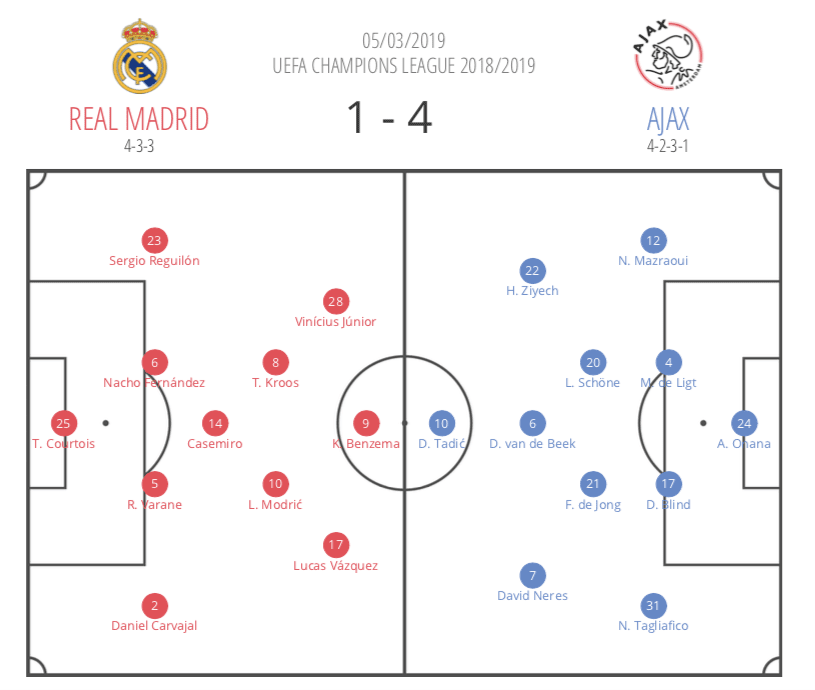
Their front three consists of striker Dušan Tadić and wingers David Neres as well as Hakim Ziyech.
Wide forwards Neres and Ziyech, both left-footed, like to tuck inside to attack down the half-spaces.
Therefore, Ajax’s attacking phase is rather centrally focused.
However, if the opposition can close down the centre of the pitch, Ajax will attack down the left flank.
Right winger Ziyech acts as an inverted winger and prefers to use his left foot to cut inside.
Left wide forward Neres, on the other hand, can also occupy the flank and use his stronger left foot in a wide area.
At times, playmaker Van de Beek also takes up a higher position next to Dušan Tadić.
This provides depth and enables either of the two to drop into space between the lines whenever Ajax have the chance to play line-breaking passes.
Full-backs Nicolás Tagliafico, Noussair Mazraoui, or Joël Veltman provide width during the Ajax attacking phase, while their double pivot attempts to provide diagonal passing lanes in the centre and position themselves on different lines.
Erik ten Hag Build-up phase
Under Erik Ten Hag’s coaching style, Ajax often utilises the advantages of a back three in the build-up.
One of their double-pivot drops either next to or between the two central defenders.
Firstly, this creates diagonal passing lanes for the full-backs who can move up the line.
Secondly, as most sides only provide a maximum of two players within the first line of the press, Ajax creates a numerical advantage.
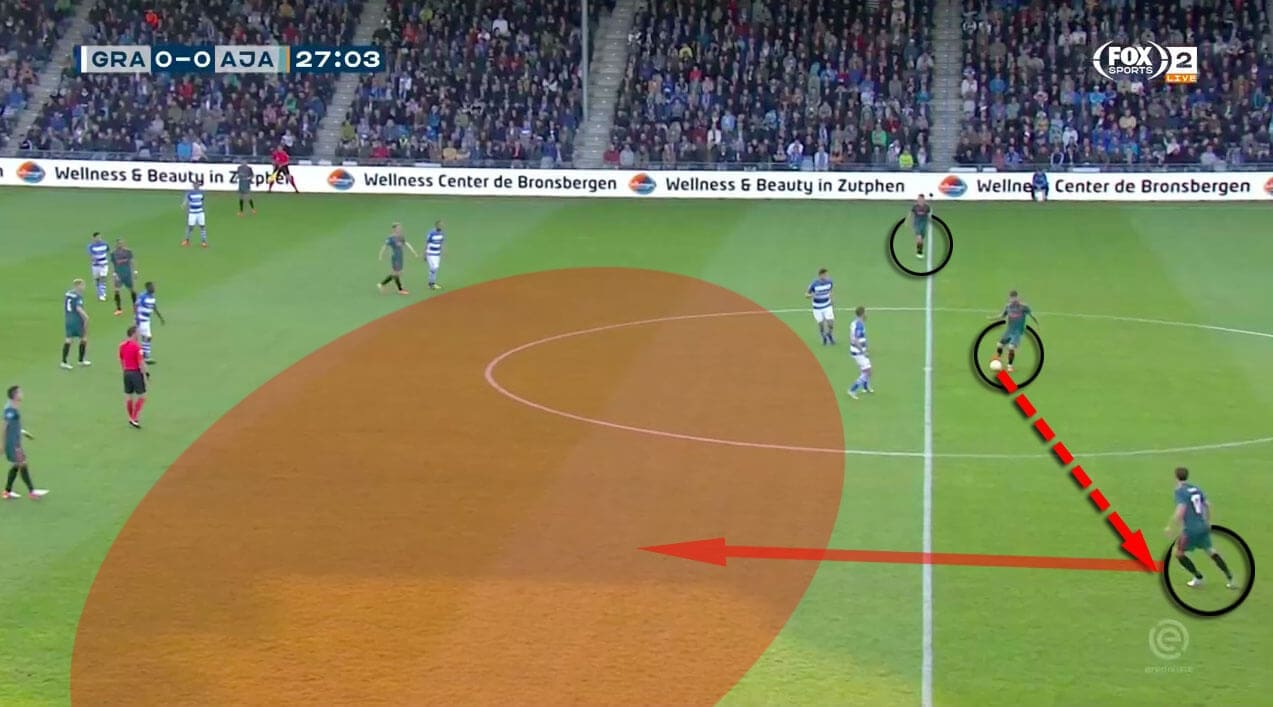
In midfield, the central players avoid dropping too deep to receive.
Instead, they try to receive the ball and, once being marked, move higher up the pitch again.
This creates space behind the opposition’s first line of press and enables the Ajax back three to carry the ball forward once they get behind the first pressing line.
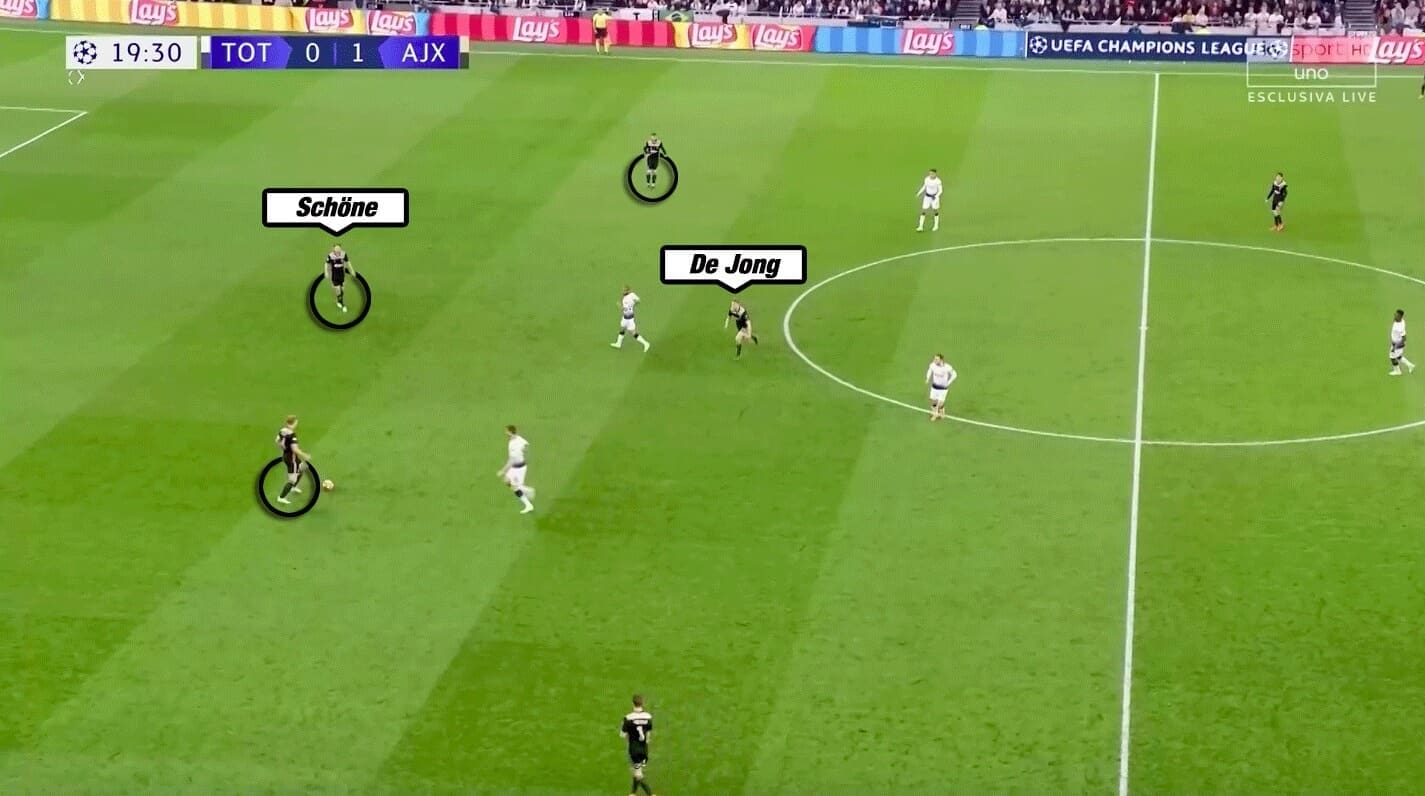
While Lasse Schöne mainly drops between the centre-backs, Frenkie De Jong prefers to fall into the left-back position.
From there, the Dutch midfielder can play diagonal passes or diagonally dribble into the most important area of Ajax play – the centre of the pitch.
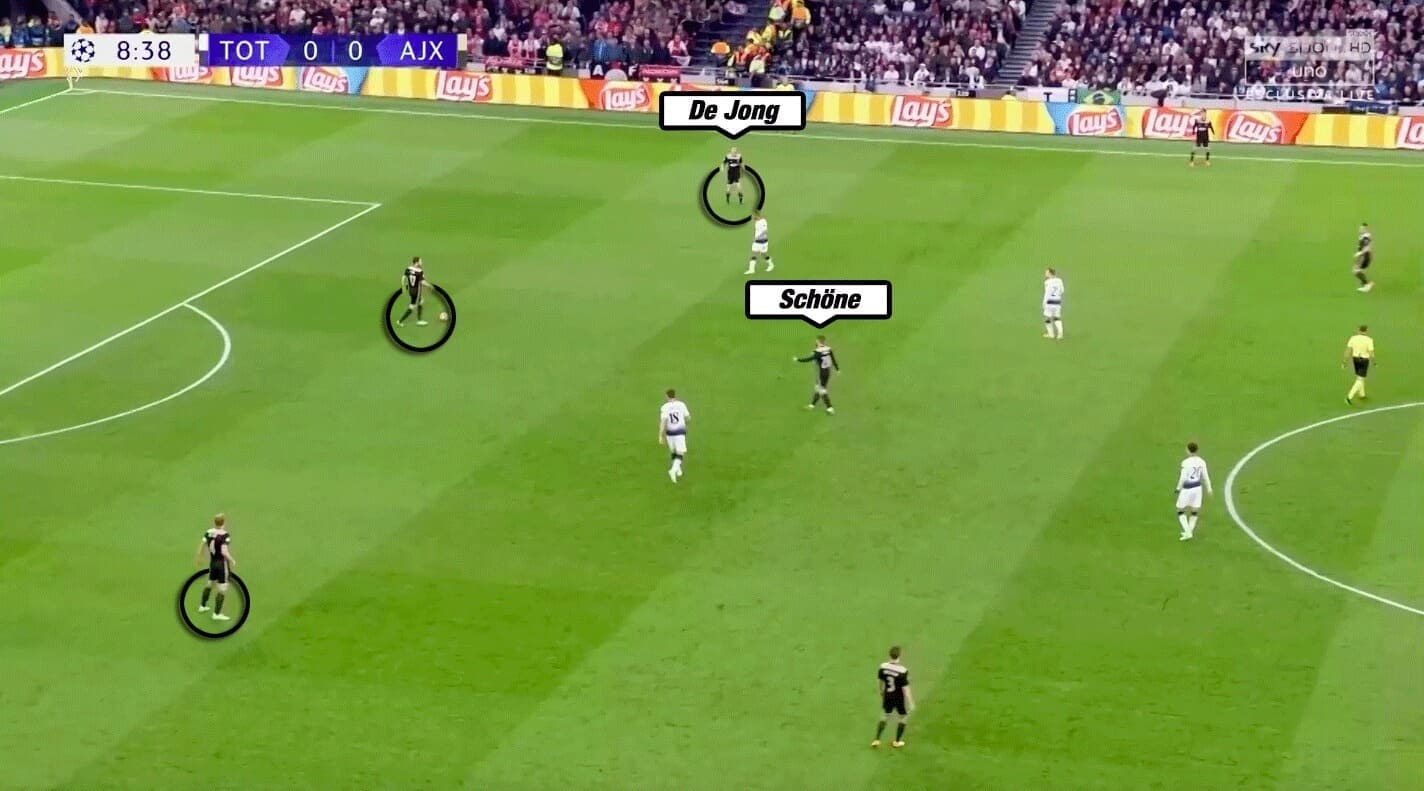
In general, Ajax tries to provide short passing options to minimize the risk of losing the ball and facilitate quick counter-pressing.
Space creation and counter-movements
Donny van de Beek is probably the most overlooked player at Ajax at the moment.
The Dutch midfielder perfectly fits into Ten Hag’s system.
He is extremely good at creating space for his teammates and recognising and utilising free space.
Van de Beek is difficult to defend, especially in the last third, because he constantly moves and takes up new positions.
Often, Van de Beek and central attacker Tadić create gaps for each other.
One of both is usually positioned on the last line and tends to drift towards one side of the pitch.
Meanwhile, the other player starts a run from an area between the lines into the gap between the opposition defenders.
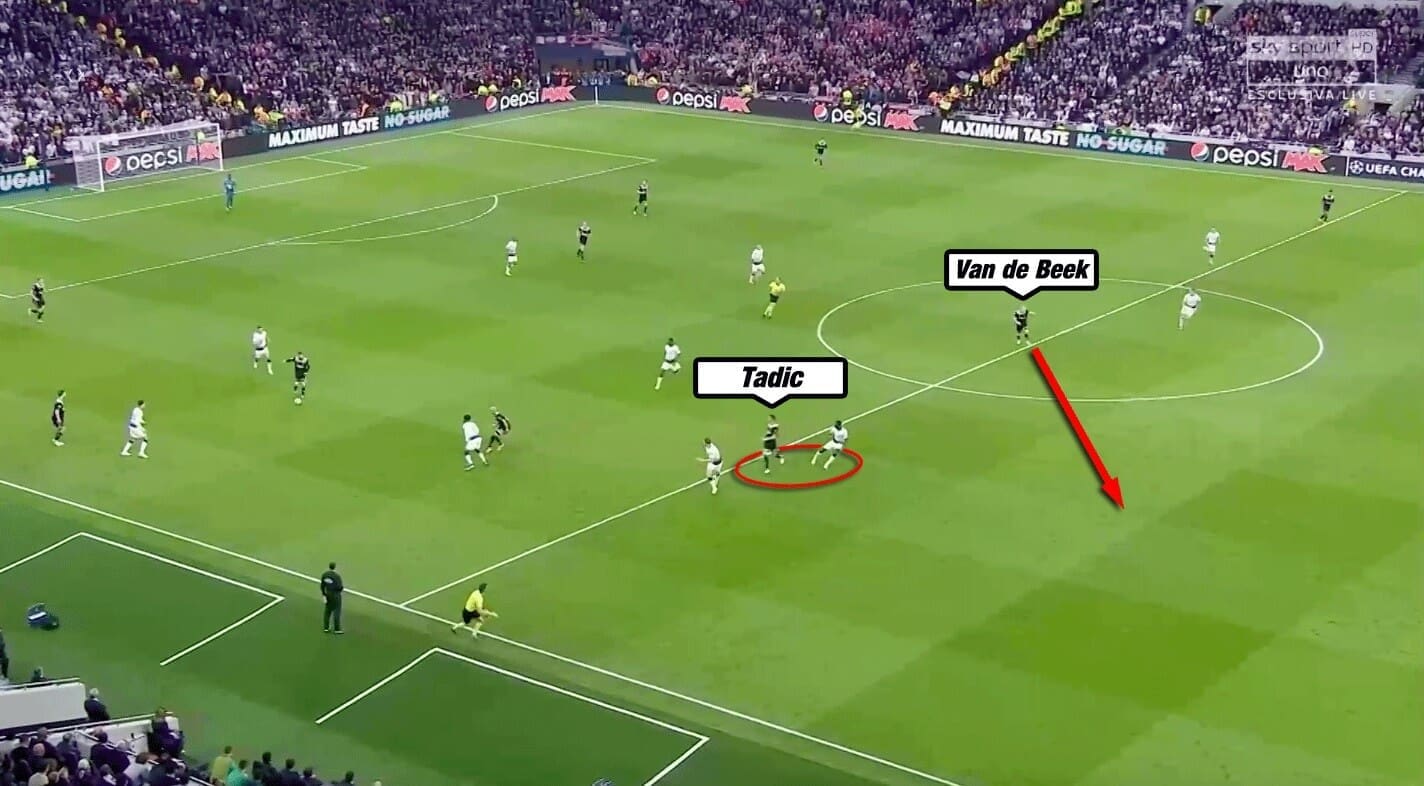
Furthermore, the two offensive men like to interchange positions.
Whenever the Serbian attacker drops in order to receive the ball, Van de Beek drags away the back line with a deep run and takes over the striker position.
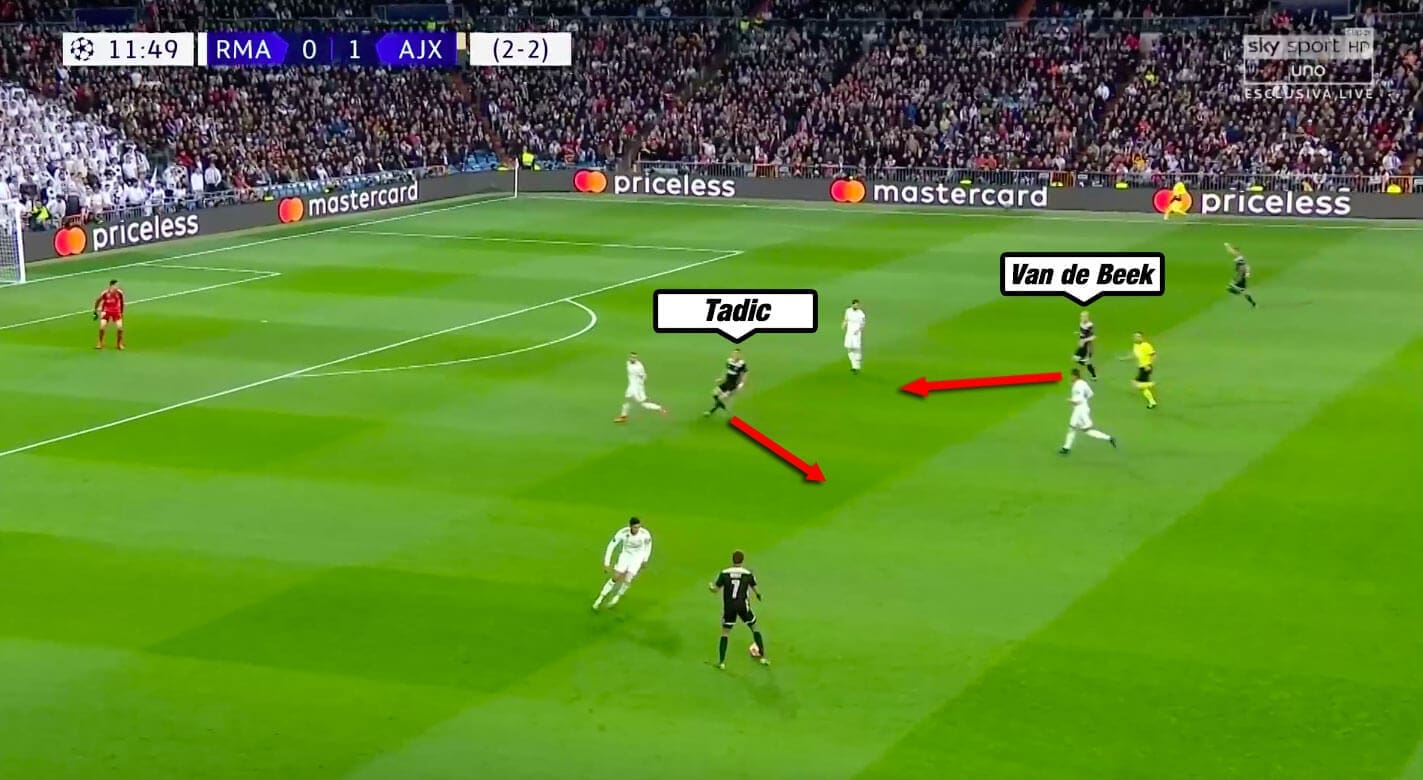
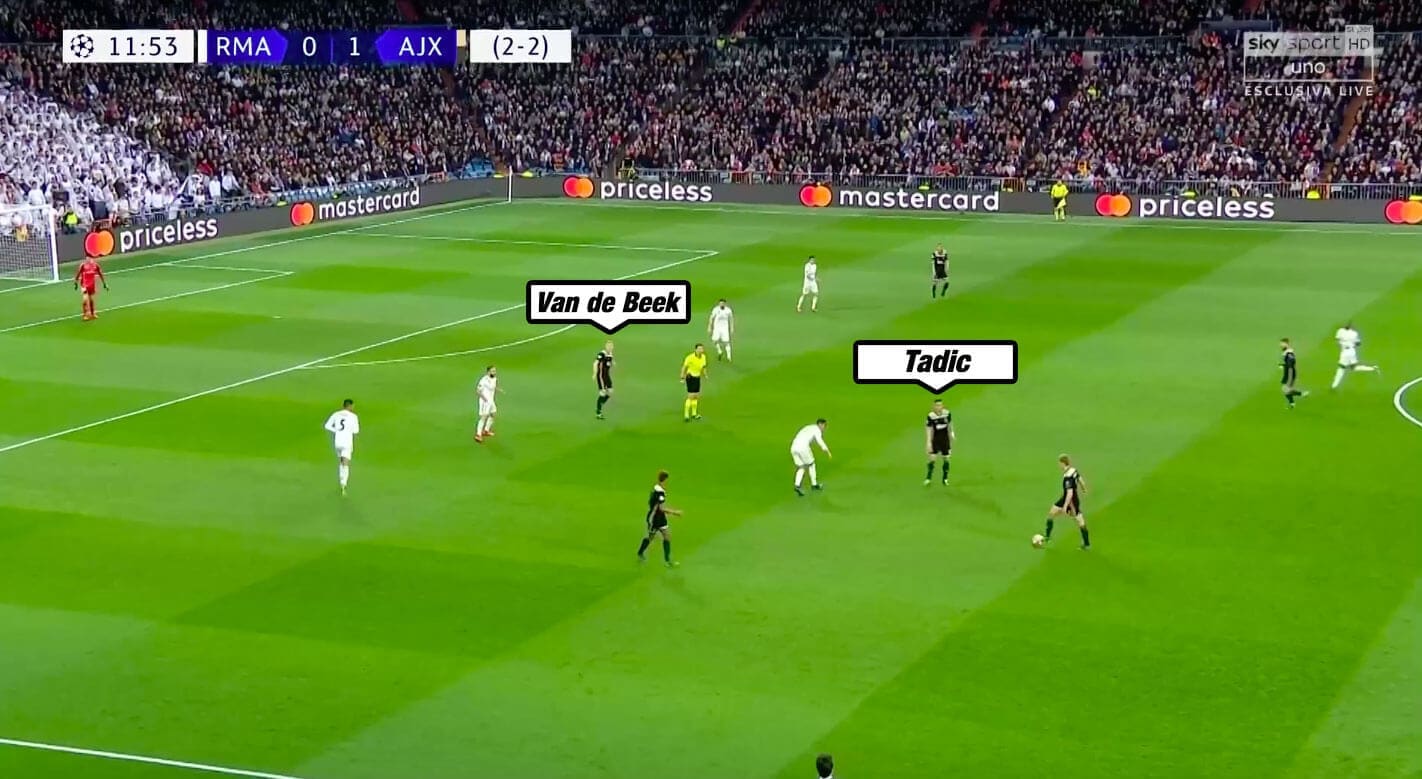
Attacking Fluidity
One of the biggest strengths of Ajax under Erik Ten Hag’s coaching style is their attacking fluidity.
A typical movement of Ajax offensive players is that they drop diagonally into space between the lines.
But before they get in front of the opposition midfield line, they turn and start a diagonal forward run.
This either drags out opposition defenders or creates passing options in areas between the lines.
With their regular forward runs, Ajax maintain depth and exploits any gaps within the opposition back line.
The fluidity means that it is not always the same player executing these movements.
Instead, all attackers and midfielders are constantly moving and trying to create space.
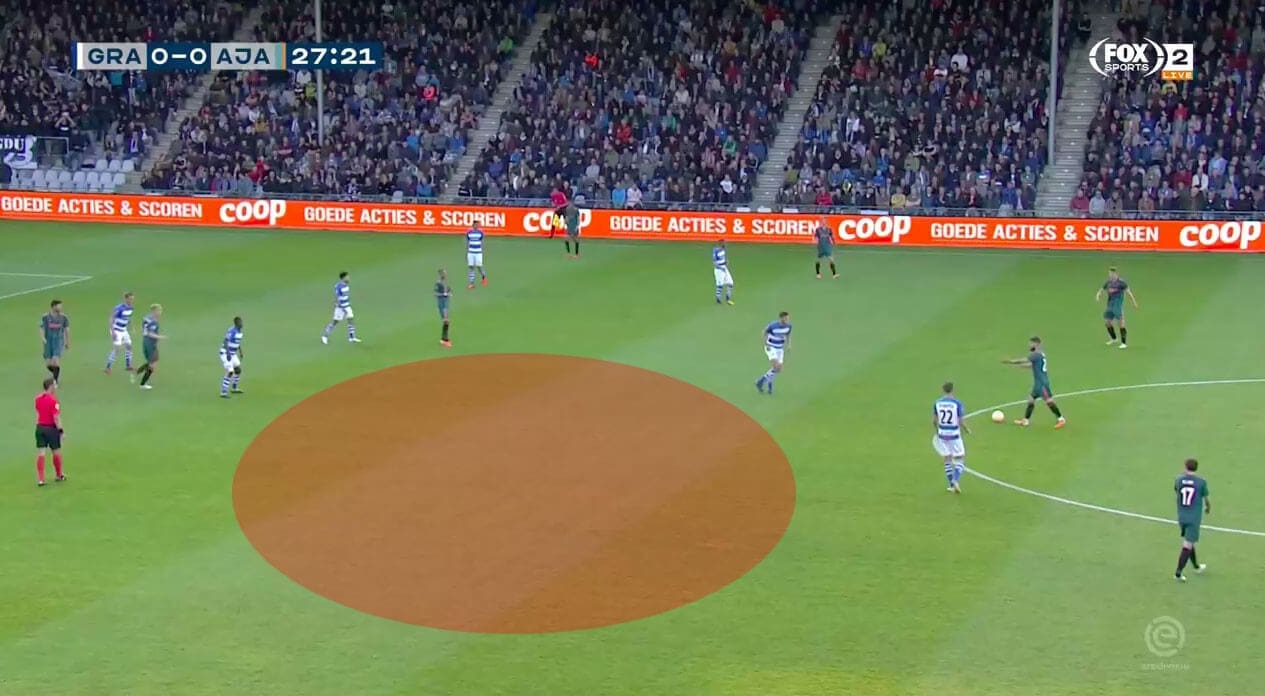
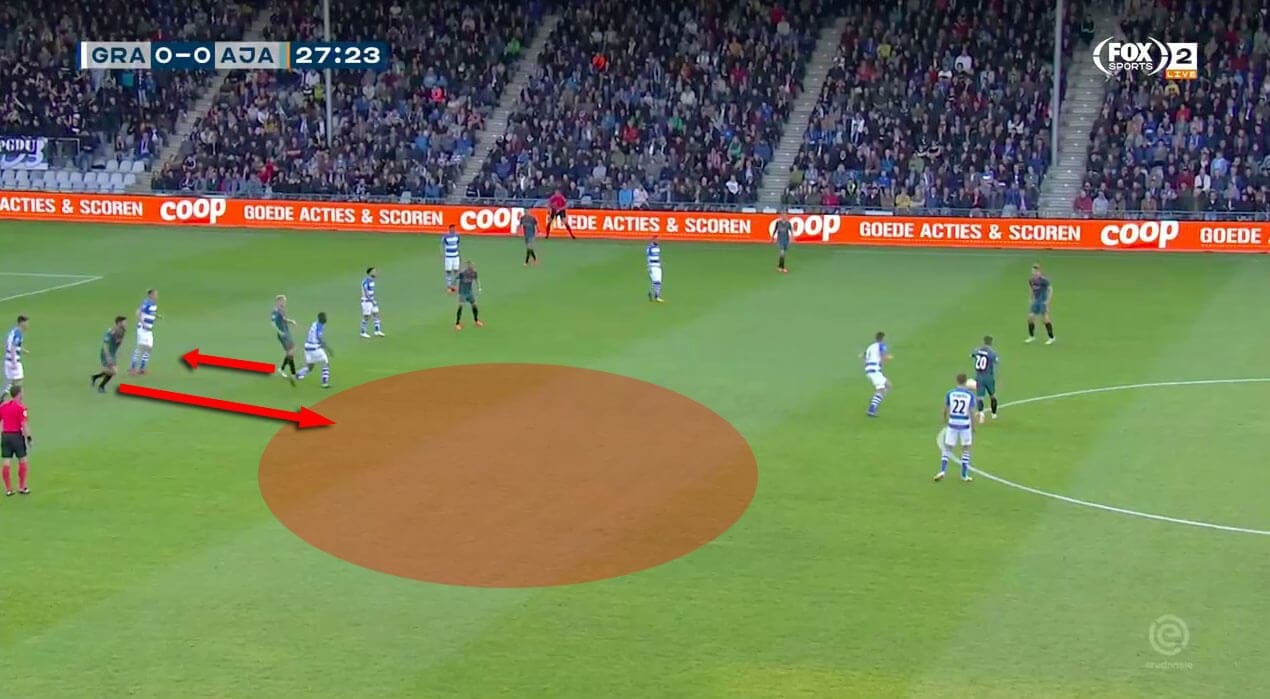
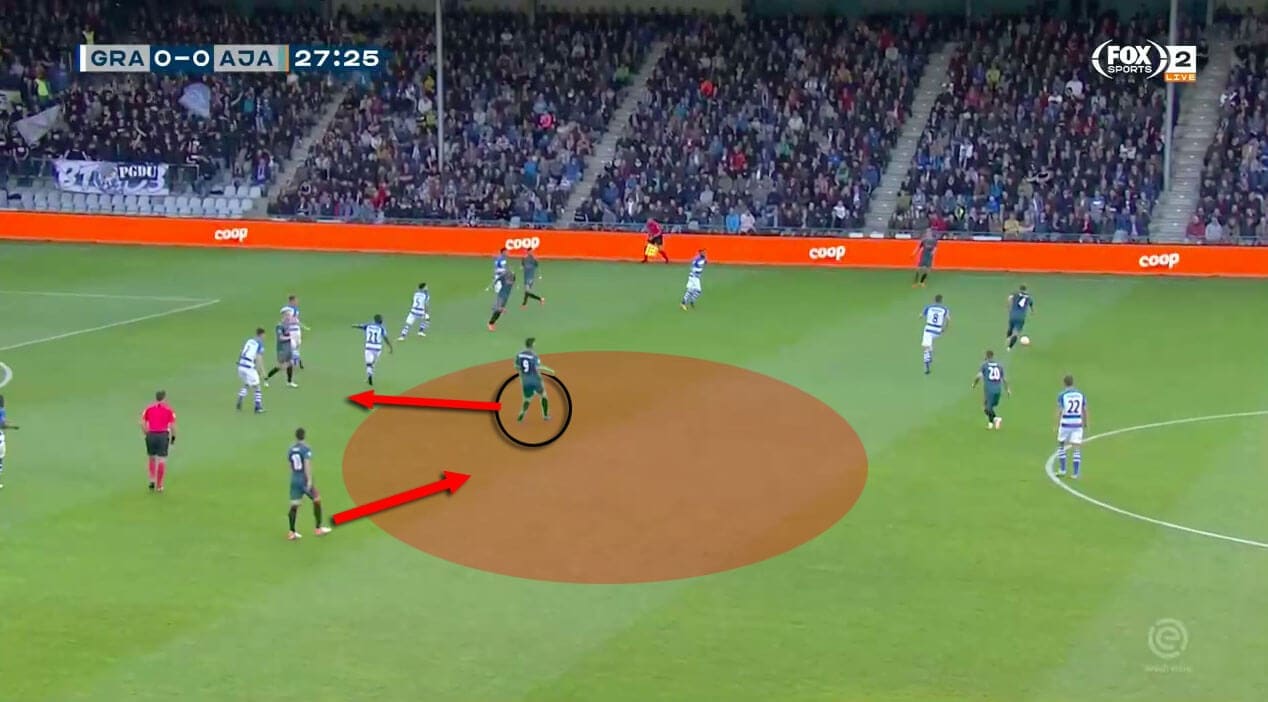
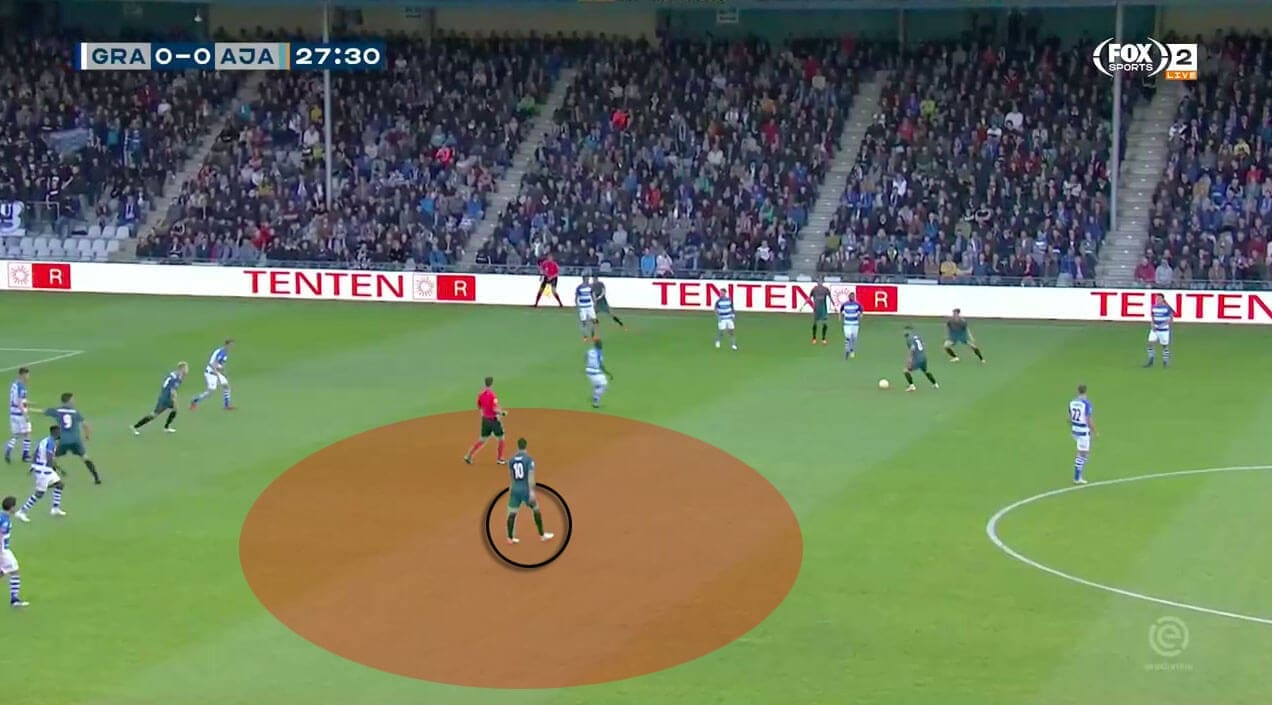
Moreover, they also interchange positions.
Since all three attackers are capable of attacking through the centre, half-spaces or down the flank, they can confuse the opposition defence with rotational movements.
Erik Ten hag Pressing system
Out of possession, Ajax attempt to regain possession.
Therefore, Ten Hag’s side uses quick counter-pressing in transition moments and a high press in clear possession phases of the opposition.
To counter-press, Ajax used their narrow attacking shape and shifted towards the ball as quickly as possible.
As several players are positioned close to the ball, usually, the distances are short, and the opponent has only a little time to play out of the counter-pressing.
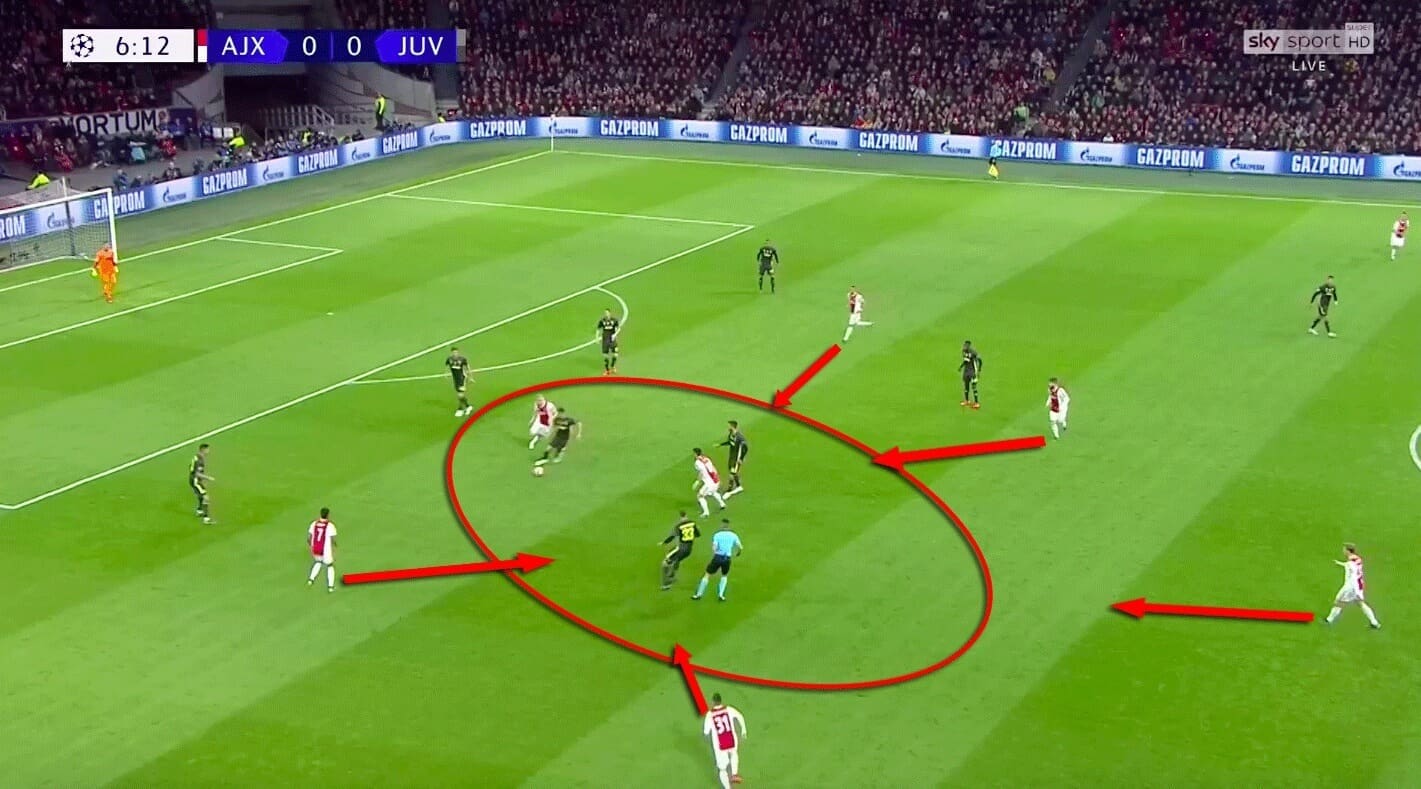
Their high press is also based on the reduction of space offered for the opposition.
In order to dominate in possession, the Ajax attacking department guides the opposition towards one side of the pitch, where they shut down every passing option.
Therefore, the ball far winger often uses an arc-like run to prevent the opposition from switching play.
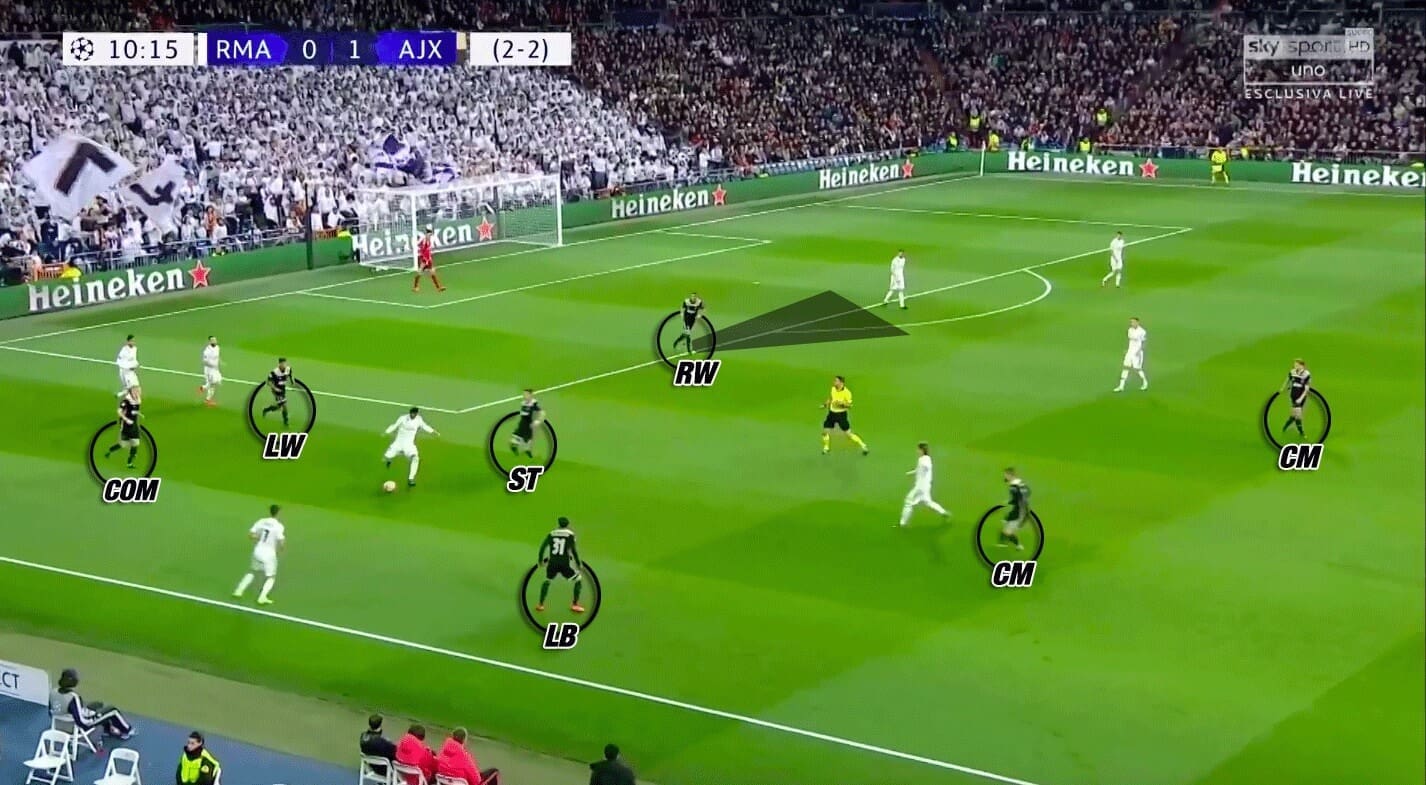
Ajax usually possesses enough players up front to execute a space-oriented press in one-quarter of the pitch.
That way, Ten Hag’s team can force many opponents to play long balls.
With their double pivot and back four awaiting the long ball, Ajax are well prepared to win the first and second balls.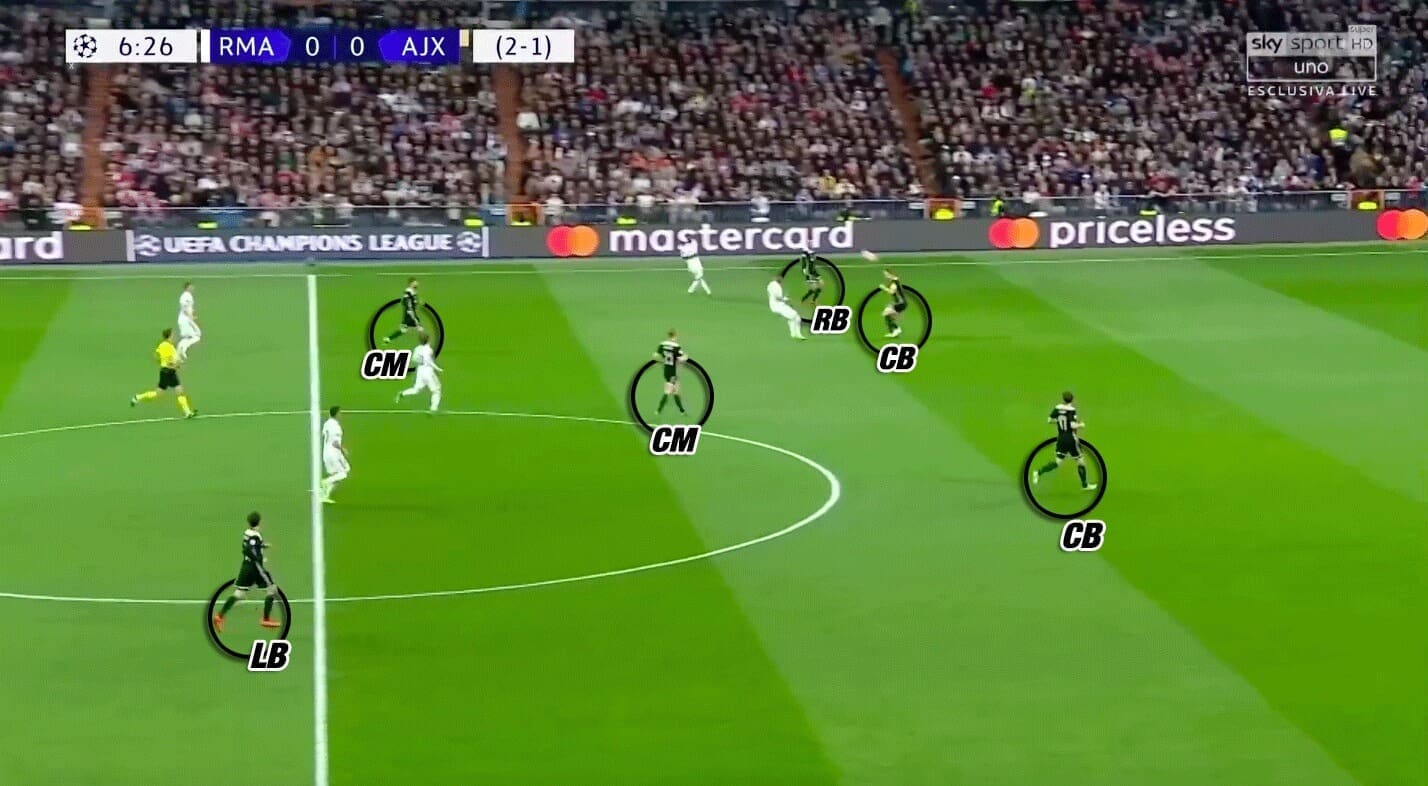
As a result, Ajax can often sustain possession after winning the first ball.
Conclusion
All in all, Erik ten Hag has successfully established an attractive style of play at Ajax.
Their attacking fluidity, short pass combination play, and active defending approach have posed problems for many top teams.
Since Ajax has also been successful under Ten Hag, the head coach might be an interesting option for Europe’s best clubs.

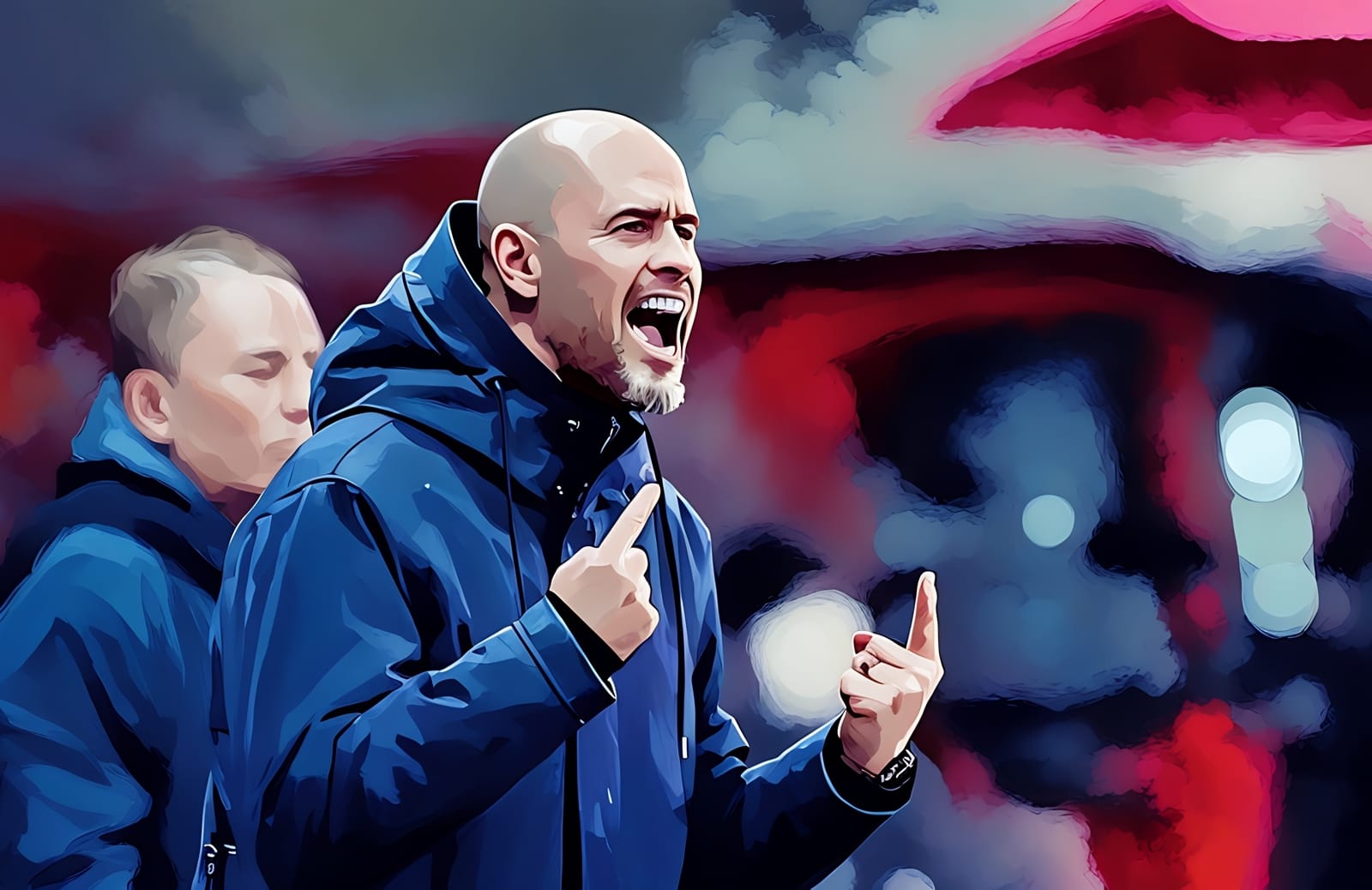



Comments